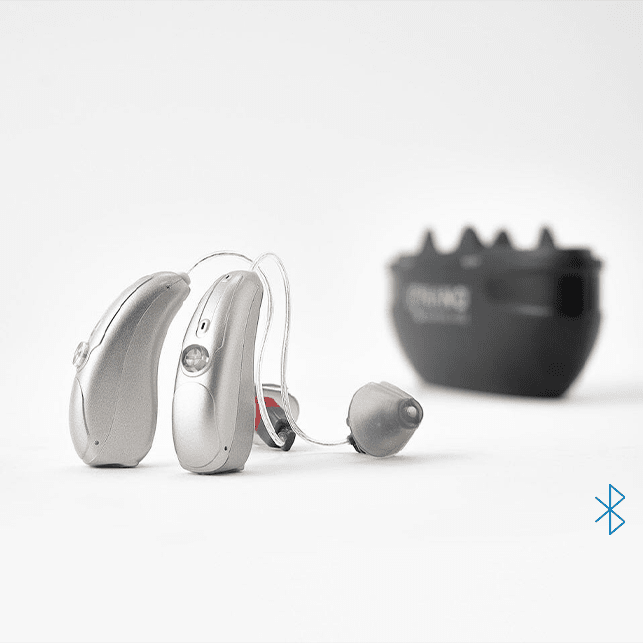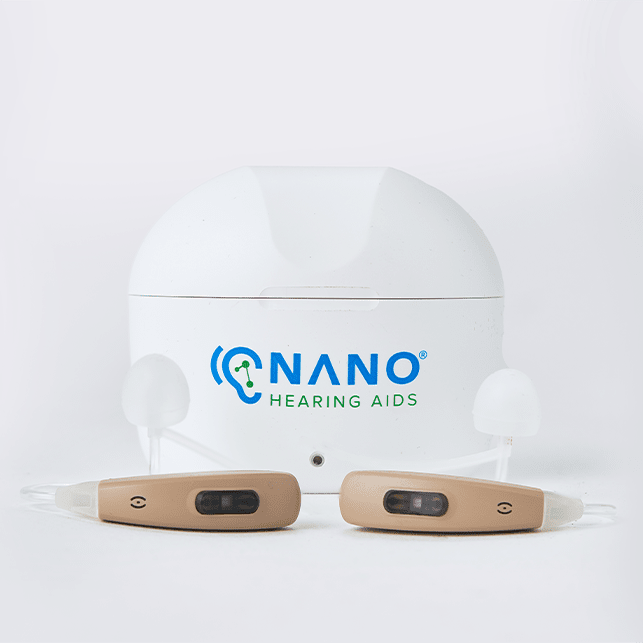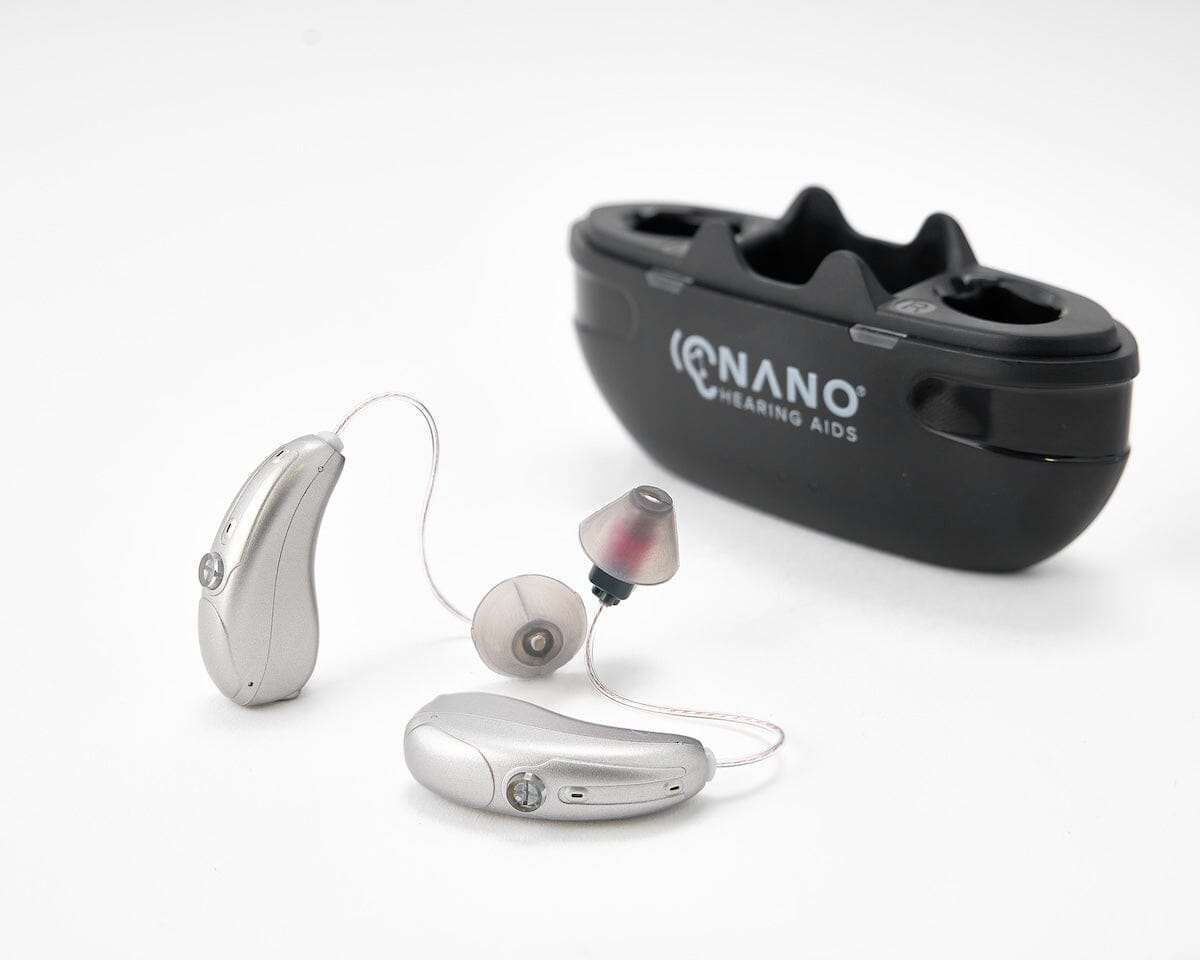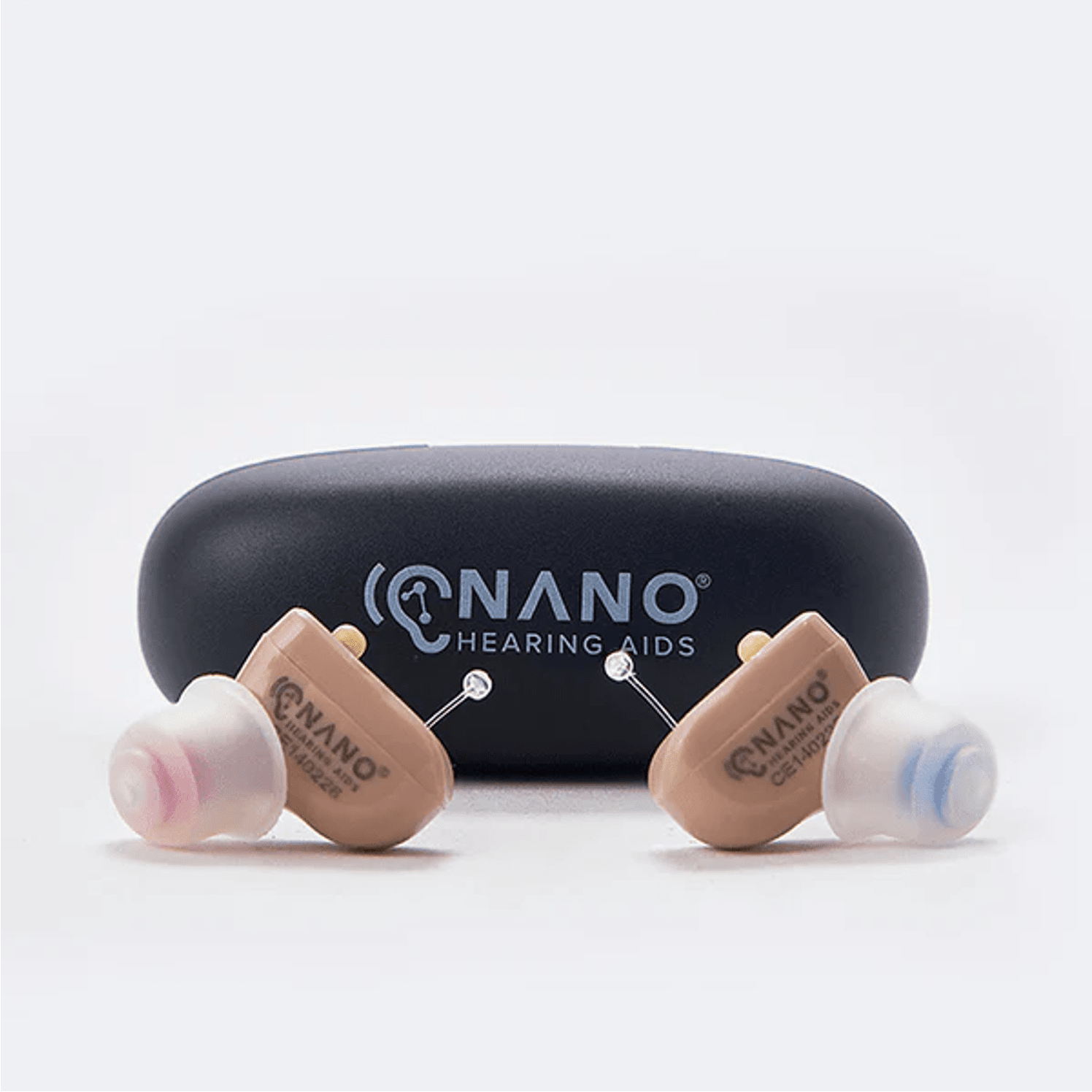Key Takeaways
- RIC (Receiver-In-Canal) and ITE (In-The-Ear) hearing aids are two popular styles of OTC hearing aids.
- RIC hearing aids place the speaker directly in the ear canal, while ITE hearing aids fit completely within the outer ear.
- RIC hearing aids are discreet and offer better sound quality, but may be less durable than ITE hearing aids.
- Nano offers a range of FDA-registered OTC hearing aids, including the Audacity RIC with app control and Bluetooth capability, and the First Ear Plus ITE with a portable charging case and simple touch controls.
Nano Hearing Aids are FDA-registered, Class I devices. Our OTC hearing aids are designed for individuals over 18 years of age with perceived mild to moderate hearing impairment. With prices starting at just $297, they offer a viable solution for those looking to improve their hearing without breaking the bank.
What are RIC and ITE OTC Hearing Aids?
RIC (Receiver-In-Canal) and ITE (In-The-Ear) OTC hearing aids are popular styles designed for perceived mild to moderate hearing loss. RIC models feature a small receiver placed in the ear canal. ITE models are housed in a custom shell that fits inside the ear - providing more power and control. Both types are available without a prescription.
Understanding RIC Hearing Aids
Design
RIC hearing aids have a small casing behind the ear and a thin wire connecting to a speaker in the ear canal - resulting in natural sound quality and better performance in noisy environments.
Benefits
The speaker placement in the ear canal reduces feedback and provides a more comfortable listening experience. The behind-the-ear component is often barely visible.
Features
RIC hearing aids can have features like Bluetooth connectivity and noise reduction technology.
Understanding ITE Hearing Aids
Design
ITE hearing aids fit entirely within the outer ear and come in different sizes. Because they fit inside the ear, ITE hearing aids are generally less noticeable than other types of hearing aids.
Benefits
Advantages include ease of handling. Custom-molding ensures a comfortable, secure fit.
Features
ITE hearing aids can house advanced features like directional microphones and wireless connectivity.
Distinguishing Features Between RIC and ITE
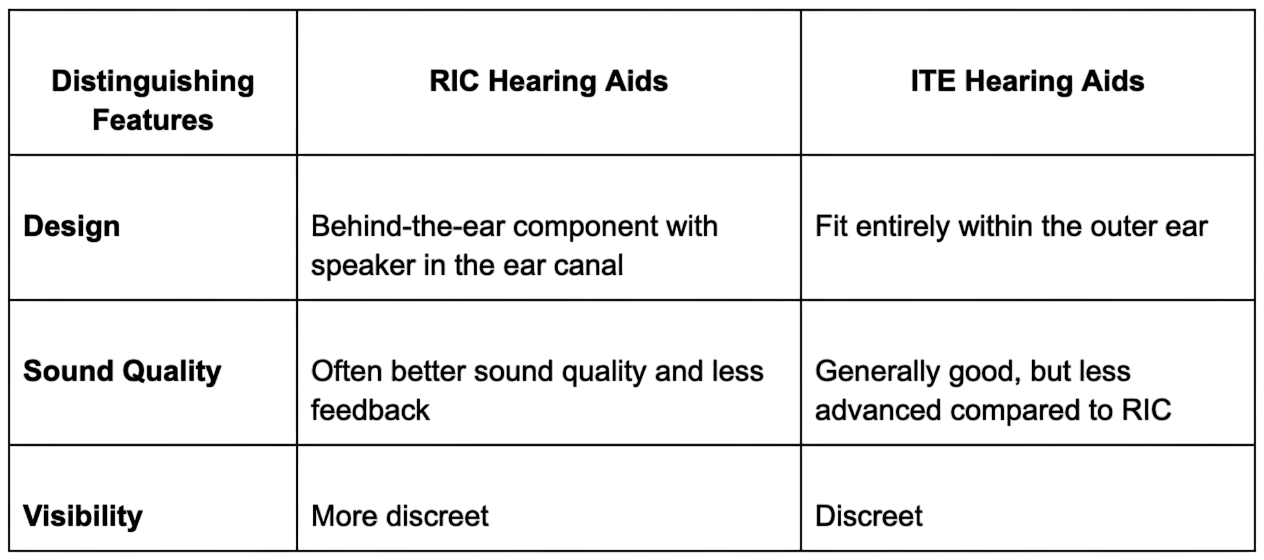
Who Should Use RIC vs. ITE
- RIC Hearing Aids: Best for individuals prioritizing sound quality and discreetness. Suitable for various hearing loss levels and customizable with advanced features.
- ITE Hearing Aids: Ideal for those needing ease of handling. Suitable for individuals with dexterity issues or those preferring a more secure fit in the ear.
Nano First Ear Plus ITE - Compact and powerful with a portable charging case that has a built-in dehumidifier and customizable ear-tips.
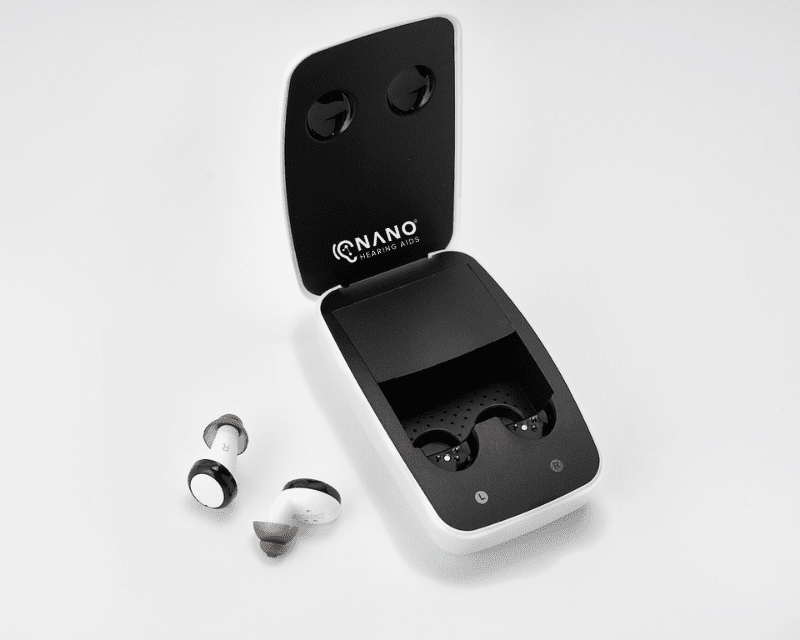
Pros & Cons of RIC and ITE OTC Hearing Aids
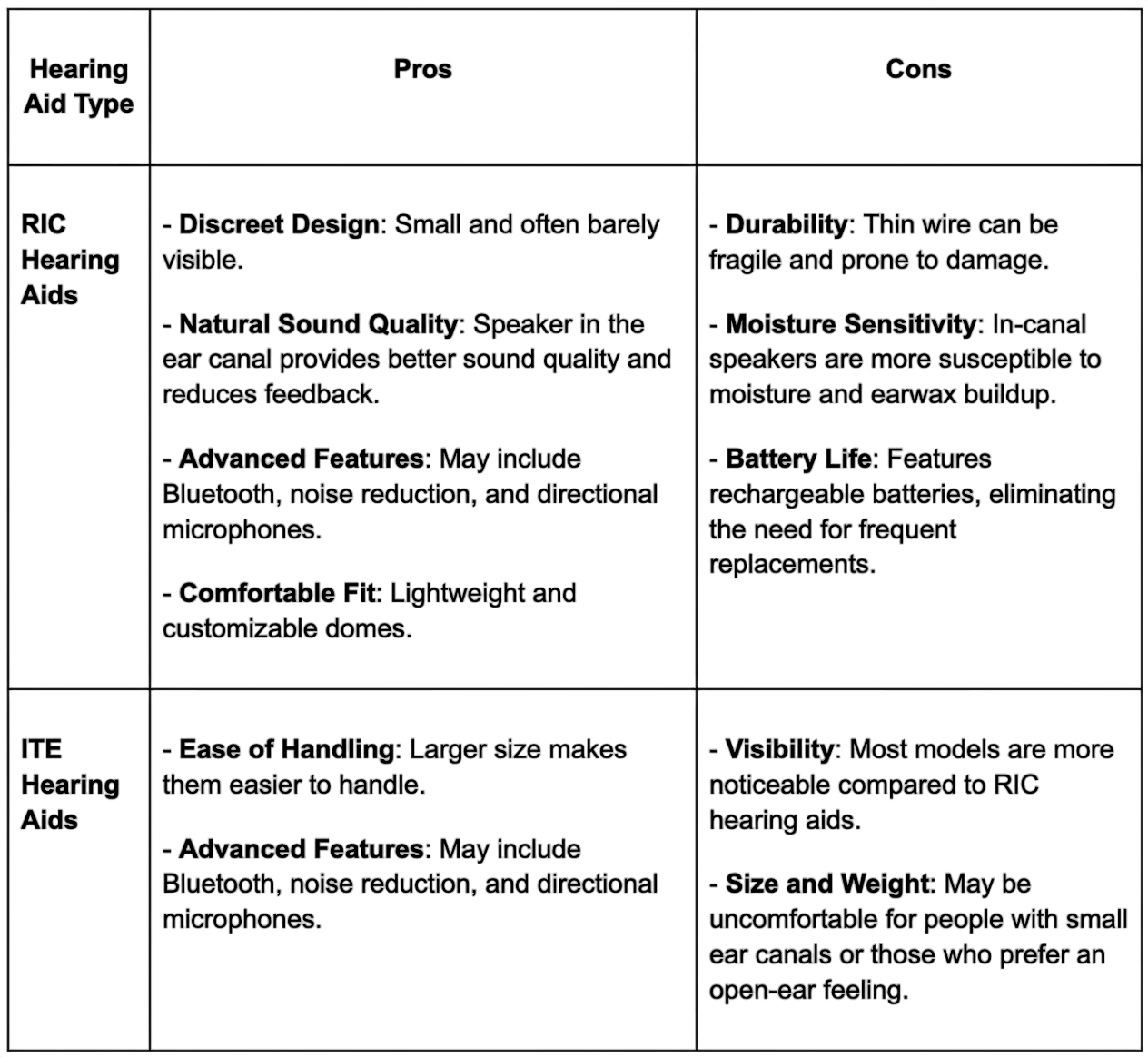
Comparison with Prescription Hearing Aids
Prescription hearing aids are custom-fitted and programmed by an audiologist, offering a more personalized hearing experience. They often include advanced features and technology not found in OTC models. Professional support and adjustments ensure optimal performance.
Pricing Comparison Between RIC and ITE OTC Hearing Aids
Average Prices of RIC OTC Hearing Aids
RIC OTC hearing aids start from $200 and can go up to $800 per device. Factors affecting price include:
- Bluetooth connectivity
- Noise reduction technology
- Directional microphones
- Rechargeable batteries
Average Prices of ITE OTC Hearing Aids
ITE OTC hearing aids start from $300 and can go up to $1,000 per device. Factors affecting price include:
- Bluetooth connectivity
- Noise reduction technology
- Directional microphones
Where to Buy RIC and ITE OTC Hearing Aids
- Online Retailers: Websites like Amazon, Walmart, and specialized hearing aid retailers.
- Pharmacies: Local pharmacies and drugstores.
- Hearing Aid Stores: Stores specializing in hearing aids, offering both OTC and prescription models.
- Direct from Manufacturers: Manufacturers' websites, including Nano Hearing Aids, where you can purchase directly, no prescription needed.
Nano Audacity RIC - Directional microphone technology and customizable fit for enhanced hearing.
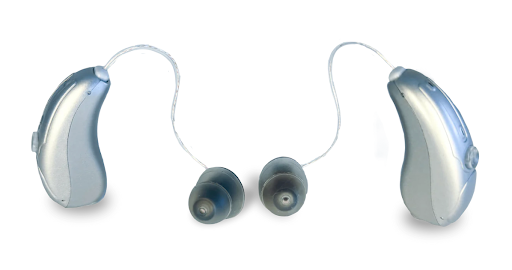
How Nano Hearing Aids Are Different
At Nano Hearing Aids, we offer both RIC (Receiver-In-Canal) and ITE (In-The-Ear) hearing aids for adults with perceived mild to moderate hearing loss. The Nano Audacity RIC, , priced at $697, features a rechargeable design, eliminating the need for frequent battery replacements. It includes app control for full customization, Bluetooth for streaming calls and audio, and a portable charging case that allows for convenient recharging on the go. With three listening programs, a multi-function button, advanced feedback cancellation, and noise management, the Audacity RIC delivers natural sound and enhanced clarity during conversations. Directional microphones enhance conversation clarity, and various dome sizes ensure comfort. It comes with a one-year warranty and a 45-day money-back guarantee.
The Nano First Ear Plus ITE, priced at $297, includes a portable charging case with a built-in dehumidifier for up to three full charges, two listening programs, and simple touch controls. This model includes feedback cancellation and noise management for clear sound and features an earbud design. It also comes with a one-year warranty and a 45-day money-back guarantee.
Frequently Asked Questions
What Should I Consider When Choosing Between RIC and ITE?
Consider your level of hearing loss, lifestyle, and personal preferences. RIC hearing aids are discreet and offer superior sound quality. ITE hearing aids are easier to handle.
Can I Use OTC Hearing Aids for Severe Hearing Loss?
OTC hearing aids are designed for perceived mild to moderate hearing loss. For severe hearing loss, consult an audiologist to find the best solution. Prescription hearing aids offer advanced features and customization for more effective management of severe hearing loss.
Do OTC Hearing Aids Require Regular Maintenance?
Yes, OTC hearing aids need regular maintenance for optimal performance. This includes cleaning the device, replacing batteries as needed, and checking for wear or damage. Follow the manufacturer’s maintenance instructions to keep your hearing aids in good condition.
How Long Do OTC Hearing Aids Typically Last?
OTC hearing aids usually last between three to five years - depending on the device's quality and maintenance. Regular upkeep and proper care can extend their lifespan.
Why Should I Choose Nano Hearing Aids?
Our hearing aids offer safe and effective solutions for perceived mild to moderate hearing loss - with advanced features like Bluetooth connectivity, noise reduction, and customizable settings. Nano hearing aids ensure a personalized experience - backed by excellent customer support, a 45-day money-back guarantee, and a one-year warranty for your satisfaction and peace of mind.

